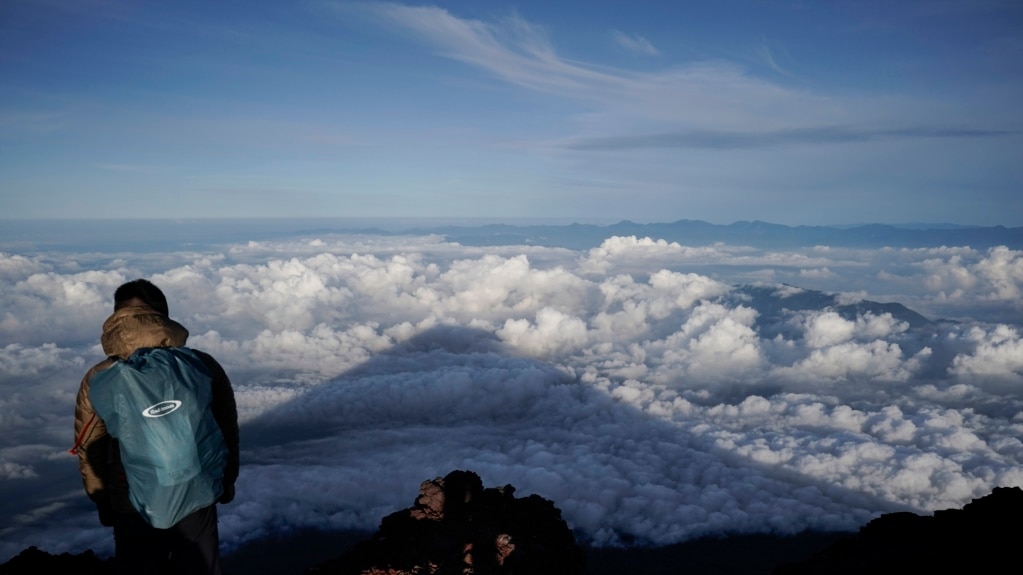The local officials protecting Mount Fuji are making changes to protect its natural beauty and the safety of people climbing it.
Those who want to hike one of the most popular paths, or trails, on Japan's famous Mount Fuji will have to buy a ticket starting on July 1. Officials aim to reduce crowds, littering and climbers who rush too quickly to the top.
The Mount Fuji climbing season lasts from July 1 to September 10. The system for buying tickets is for those walking on the Yoshida Trail. It is on the side of the 3,776-meter-high mountain that is within Yamanashi Prefecture. Climbers can also climb the mountain in Shizuoka prefecture, southwest of Mount Fuji. Shizuoka has requested a voluntary fee of about $6 per climber since 2014 and is looking for ways to balance tourism and environmental protection.
Mount Fuji is a volcano
Mount Fuji is a stratovolcano, a tall, steep-sided mountain formed by layers of volcanic materials such as ash and lava. UNESCO chose it as a World Cultural Heritage site in 2013.
The new rules will permit only 4,000 climbers to enter the trail per day for a hiking fee of about $18. Yamanashi prefecture officials said 3,000 of those tickets will be available on the internet and the other 1,000 can be bought in person on the day of the climb.
Hikers may also give an additional amount for protecting the mountain’s natural resources. Climbers can request tickets on the Mount Fuji Climbing website. The Environment Ministry and the mountain's two home prefectures, Yamanashi and Shizuoka, operate the site.
Bullet climbing
Mount Fuji has three main trails. There are 10 stations. Each is at a different height, or altitude. Most hikers begin at the “5th station,” where there is a bus stop. Under the new system, climbers must choose between a day hike or an overnight stay at a shelter along the trail. Hikers who reach the 5th station after 4 p.m. and are not staying overnight have to go back down. This rule is to stop "bullet climbing," or rushing to the top without enough rest. Traveling to a high point too quickly can cause altitude sickness which includes headaches, dizziness and nausea.
A symbol of Japan, the mountain called "Fujisan" was once thought of as a holy volcano. Today, many hikers climb to the top to see the sunrise. To see the sunrise, hikers often stay at a shelter at the 7th or 8th station and climb to the top in the early morning darkness.
Hiking in the dark increases the chance of injury. But a major problem is the large amount of waste people have left behind: plastic bottles, food, and even clothing.
The Environment Ministry reports that during the climbing season in 2023, over 220,000 people went up Mount Fuji. That is close to the pre-pandemic level and officials expect more visitors this year.
Last year, more than 25 million visitors came to Japan. The Japan National Tourism Organization expects that number to rise in 2024 to over 32 million.
I’m Jill Robbins.

